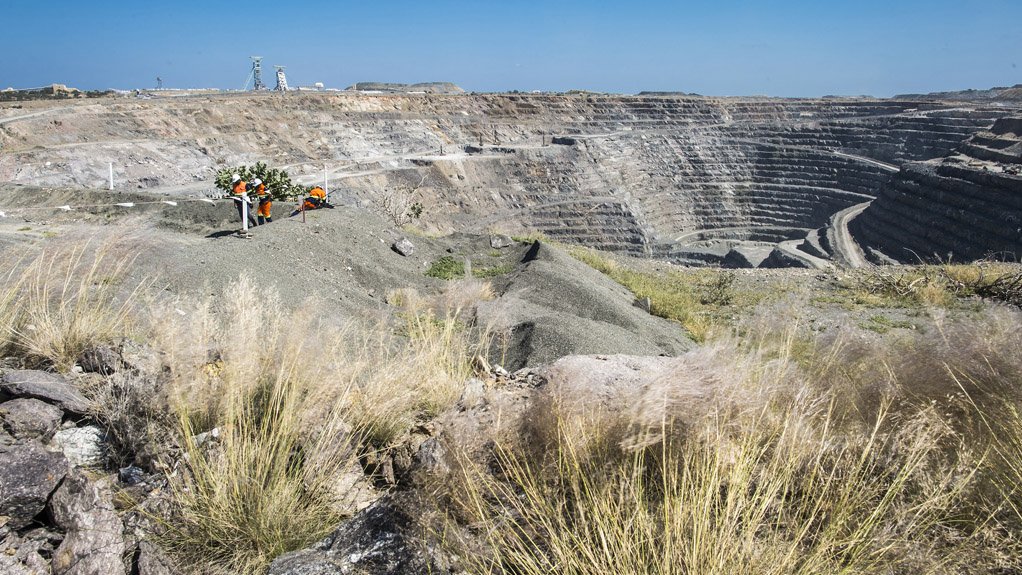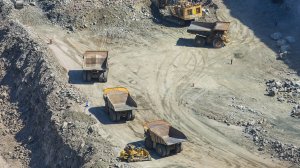Anticipating and prioritising the additional challenges and potential hazards of implementing underground mining operations at the Venetia diamond mine will require putting the necessary enablers and precautions in place over the next few years.
“It is a massive operation in logistics and cooperation demanding integration of the present with the future as we mine the openpit today and prepare for the underground mine,” says diamond company De Beers’ Venetia mine GM, Ludwig von Maltitz.
The De Beers Consolidated Mines (DBCM) operation, rated globally as one of only five Tier 1 diamond mines, is situated 80 km west of Musina, in Limpopo. Production from the underground development is expected in 2022 and the current plant will treat about 132-million tons of material, containing an estimated 94-million carats.
According to diversified mining company Anglo American’s 2015 ‘Ore Reserves and Mineral Resources Report’, the estimated $2.1-billion Venetia Underground Project (VUP) extends the current life-of-mine to 2046.
Von Maltitz is responsible for operating the openpit mine and preparing for the integration of the surface operations and the VUP.
He adds that, together with several specialist contracting companies, the miner is currently mitigating the risks involved in building an underground mine, which includes sinking two 1 000 m shafts, developing the decline to the same level and seeking opportunities to prepare the Venetia workforce to transition to an underground operation in six years, while integrating several thousand construction-related employees into the De Beers way of working.
During construction, the removal of rock to build shafts, tunnels and infrastructure will generate enough rock to pave a road from Musina, in Limpopo, to Cape Town, in the Western Cape, and back – all this while generating the revenue needed for DBCM to fund the massive mining investment without taking on bank debt.
DBCM emphasises that every action is approached with “safety above all else”, including time pressure, where time is money.
“The linear and slower approach to shaft sinking demonstrates the Venetia mine’s ‘zero harm’ [strategy], where safety overrides all other demands. The South African operations of De Beers last suffered a fatality in 2008 and this memory drives the fanatical approach to the integration of the surface- [based operation] and underground mine under construction beneath our operating openpit,” emphasises Von Maltitz.
Mining of the three openpit kimberlites, K1, K2 and K3, will eventually be phased out with K2 closing off at the end of 2016 and K3 operations expected to end in 2017. “The K1 deposit will take the mine through to 2022 and, at this point, underground mining will begin about 50 m below the point where production above ground stopped,” Von Maltitz states.
He highlights that, as the pit gets deeper over the next few years, Venetia’s waste stripping rate is expected to increase.
“However, when underground mining takes over, we will not have this challenge. The working cost of underground mining is lower than [that of] surface mining and it produces much less waste and has less of an environmental impact, especially in terms of visible impingement on the landscape,” Von Maltitz notes.
Underground Progress
Since construction, led by Murray & Roberts, began in 2014, there has been steady progress and the VUP is expected to meet the 2022 target date for completion.
Senior site manager at the VUP Richard Greig states that the production and services shafts are currently at 140 m and 100 m deep respectively, and will eventually reach a depth of 1 000 m.
The 7.5 km decline access tunnel is being developed at a rate of 1.7 km/y, with the first 500 m already in place. “This will also meet our standard of safety, as it can double as an exit or access point in the case of an emergency,” he notes.
Greig adds that the construction of underground tunnels and infrastructure will take place from the shafts. The decline ramp will reach a depth of just 1 km and will provide access to the first orebodies.
Von Maltitz notes that the conversion to an underground mining operation will see 80% of the mine remaining unchanged, with the treatment plants, engineering services, mining support infrastructure and employee supporting services continuing as they are.
Edited by: Tracy Hancock
Creamer Media Contributing Editor
EMAIL THIS ARTICLE SAVE THIS ARTICLE
To subscribe email subscriptions@creamermedia.co.za or click here
To advertise email advertising@creamermedia.co.za or click here















